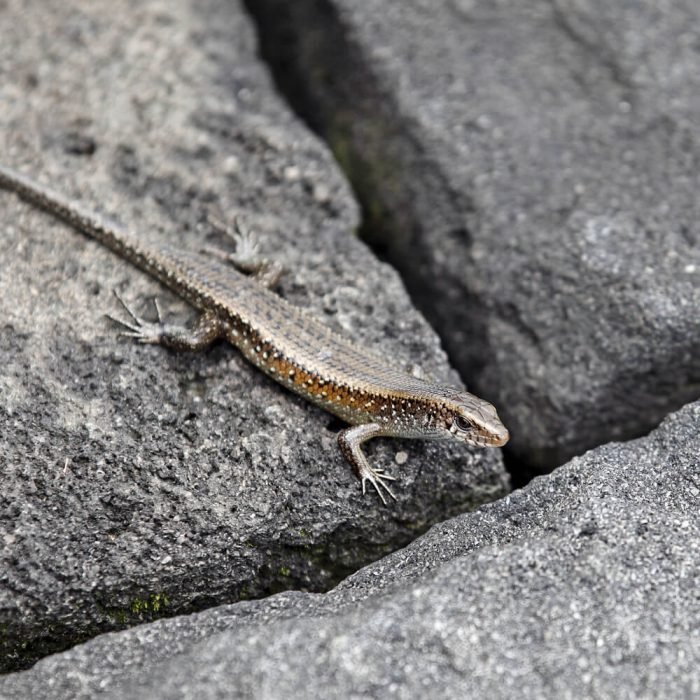Speckle-lipped Skink
( speckle-lipped mabuya )
- Trachylepis maculilabris
- IUCN Status: Least Concern
- Threat: harmless
- Venom/Toxin: none
- Trend: stable

General Information
The speckle-lipped skink (Trachylepis maculilabris) is a species of skink. It is distributed through much of sub-Saharan Africa.
Ecology & Behaviour
This lizard is cosmopolitan in the Guinean humid tropics, occurring in forest, moist savanna, and varied anthropogenic habitats including plantations, gardens and farmland (Trape et al. 2012, Spawls et al. 2002). Within Ethiopia it has been recorded from a range of habitats, including humid savanna to cool grassland, woodland clearings, dry woodland and bush (Nachisar National Park – Largen and Spawls 2010). It is particularly associated with human structures, but is also found on the ground and in low vegetation (Trape et al. 2012), including waterside bushes along the shore of Lake Victoria (Spawls et al. 2002). In coastal areas it can be found on coconut palms (Spawls et al. 2002).
Diet
This diurnal skink feeds on arthropods and slugs (Trape et al. 2012).
Reproduction
It is oviparous, laying between six and eight eggs (Largen and Spawls 2010).
Distribtion & Habitat
This very widespread species ranges through humid sub-Saharan Africa from Guinea to Angola, through parts of Zambia, Malawi and Mozambique, including all territories in the Guinean climatic zone of West Africa (Trape et al. 2012). It ranges as far northeast as Ethiopia and southern Somalia, being known from the Mogadishu, Middle Juba and Lower Juba regions of the latter country (Largen and Spawls 2010, Lanza 1990). Also recorded from Europa Island, Mozambique Channel Islands of the French Southern Territories. It tends to be localized within its extensive range (Largen and Spawls 2010). In East Africa records are associated with rivers, the shores of Lake Victoria, and the flanks of the Rift Valley (Spawls et al. 2002). It occurs inland in Tanzania to the Usambara and Udzungwa Mountains, but is absent from inland areas of Kenya aside from a doubtful record from Kora National Park (Spawls et al. 2002). It is reported to reach elevations of up to 2,300 m asl in East Africa (Largen and Spawls 2010), and 2,550 m asl in West Africa.
References
Share:
- Phylum: Chordata
- Class: Reptilia
- Order: Squamata
- Family: Scincidae
- Genus: Trachylepis









